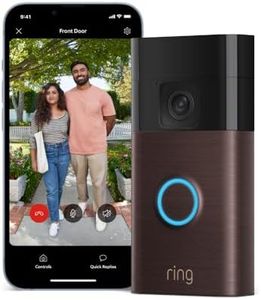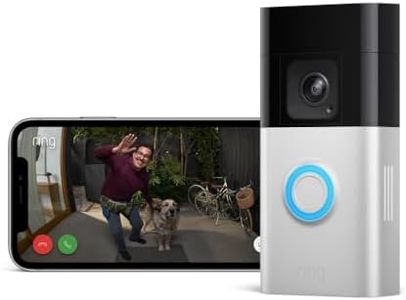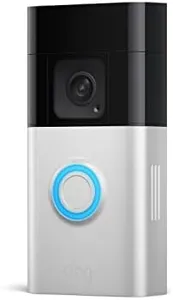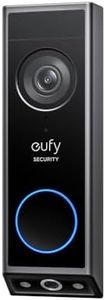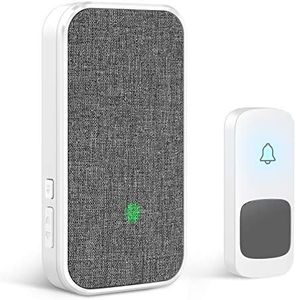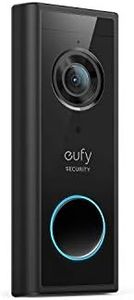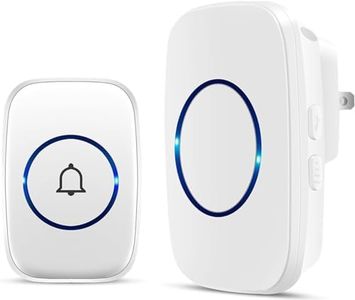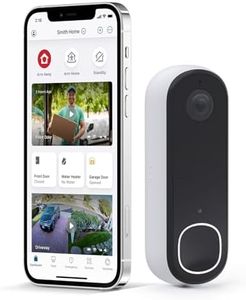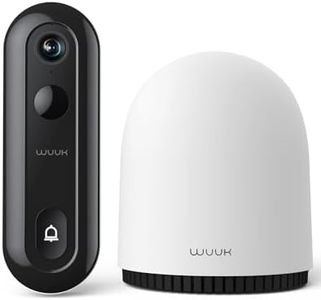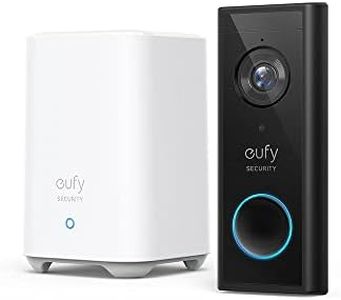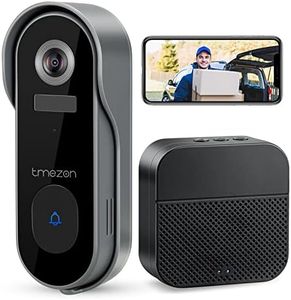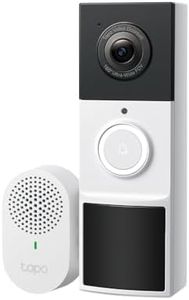We Use CookiesWe use cookies to enhance the security, performance,
functionality and for analytical and promotional activities. By continuing to browse this site you
are agreeing to our privacy policy
10 Best Wireless Doorbells
From leading brands and best sellers available on the web.Buying Guide for the Best Wireless Doorbells
Choosing the right wireless doorbell for your home can make your life more convenient and even add some security. When considering which model to purchase, think first about your home’s size and layout, as well as your personal preferences for sound, appearance, and any extra features you might want. Wireless doorbells are great because they’re easy to install, require no wiring, and are generally very user-friendly. Knowing what to look for in terms of essential features will help you pick one that serves you well in daily life.RangeRange refers to how far the doorbell’s transmitter (the button) can be from the receiver (the chime inside your house) and still work properly. This is crucial because if your home is large or has thick walls, a short-range doorbell might not work reliably. Doorbells typically come with ranges spanning from around 100 feet up to over 1,000 feet. If you live in a small apartment, a short range may be enough, but for larger homes or if you want the receiver on a different floor, opt for a longer range to avoid missed visitors.
Power SourceWireless doorbells can be powered either by batteries or plugging them into an electrical outlet. Battery-powered units offer flexibility in placement but will require you to replace or recharge batteries over time. Plug-in receivers are convenient as there’s no need to worry about battery life, but they’re limited to locations near outlets. Consider how often you'd like to change batteries or if you have easy access to outlets where you want your doorbell chime to be.
Sound OptionsThis refers to the variety and quality of chimes the doorbell offers. Some wireless doorbells have just a simple ding-dong, while others offer dozens of melodies and volume adjustment. If you enjoy customization or need a loud chime to hear across multiple rooms, look for a model with various sound choices and adjustable volume. For households with people sensitive to noise or for apartments, a simple, quieter chime might be best.
Weather ResistanceBecause the transmitter (the part outside) is exposed to the elements, it should be able to handle sun, rain, and temperature changes. Weather-resistant or waterproof ratings help ensure that your doorbell will keep working in all seasons. If your entryway is exposed, prioritize higher weatherproofing. For covered porches or indoor gates, this is less of a concern.
Ease of InstallationMost wireless doorbells are designed to be easy to set up, often requiring just adhesive or simple screws for mounting. However, some might require more tools or steps. If you prefer minimal DIY, check that the doorbell is described as easy or tool-free to install. If you’re comfortable with a little work, you have more flexibility in style and features.
Expandability and ConnectivitySome doorbells allow you to connect multiple receivers or extra push buttons, making it ideal if you have several entry doors or want to hear the chime in more than one area. Others can connect to your smartphone, letting you answer visitors remotely. Think about whether you need to cover multiple points of entry or if you’d like smart features to integrate with your home technology.
Security and Extra FeaturesCertain wireless doorbells now come with added features like cameras, motion sensors, or the ability to record video. These extras can greatly increase convenience and safety, but add to the complexity. If you want more than just a chime—like visual confirmation of visitors or notifications on your phone—look for models with these advanced features. If your need is just to know when someone’s at the door, a simpler model will do the trick.
